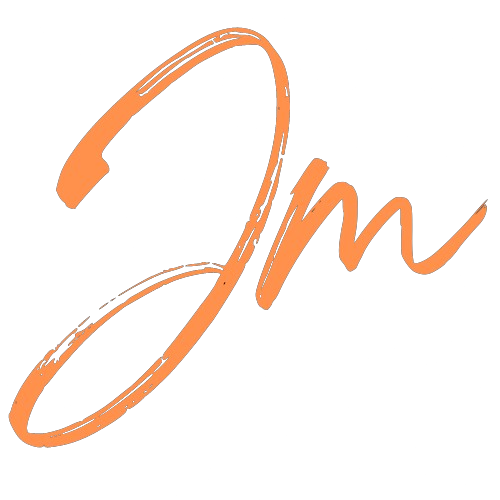Introduction
Are you feeling the pressure to deliver results quickly and adapt to ever-changing priorities? Traditional project management techniques can often lead to frustration. But there’s a solution: Agile Methodology.

Agile is more than a slogan; it’s a powerful technique that has altered the operations of companies such as Spotify and Netflix. Agile prioritizes flexibility, collaboration, and continuous improvement, leading to proven increases in Agile Productivity!
But how can you harness the full potential of Agile to Boost Team Productivity? This blog post will provide you with the top 5 most powerful Agile Techniques specifically chosen to enhance your team’s productivity.
We’ll delve into practical applications, share real-world examples from tech giants like Google, Facebook, and Spotify, and provide concrete methods to help you implement these techniques and unleash your team’s full potential.
Whether you’re managing Software Development Teams or any other project teams, these Agile techniques can be a game-changer. We’ll cover Scrum Techniques, Kanban Boards, Daily Standups, Sprint Planning, and Agile Retrospectives.
Each of these techniques plays a crucial role in Team Collaboration and leads to Increased Efficiency. You’ll learn how to improve team productivity with Agile, understand the benefits of Agile for managing project teams, see examples of Agile techniques for enhanced workflow, and get tips on applying Agile methods to boost productivity.
Moreover, we’ll also share tips for boosting team morale in an Agile environment.
So, are you ready to transform the way you deliver projects and join the elite group of highly productive Agile teams? Let’s dive into the precise strategies that will propel your team to the next level!
Why Agile Is More Relevant Than Ever
The project management landscape is constantly evolving. In this fast-paced environment, Agile methodology stands out not only as a framework but also as a vital guide for managing the rising trend of remote work and the rapid technological improvements. Agile has become synonymous with adaptability, increased efficiency, and an unwavering commitment to customer satisfaction.

Why Agile is Booming
- Adaptability: Agile ensures a unique product-market fit by embracing flexibility and continuous improvement. This allows teams to adjust to changing priorities and market demands.
- Operational Efficiency: Agile promotes streamlined workflows and eliminates unnecessary processes, leading to increased efficiency.
- Customer Focus: Agile prioritizes continuous client feedback, ensuring the final product meets their needs.
The Power of Agile: Real-World Benefits
Empirical studies, such as those by McKinsey & Company, highlight the tangible benefits of Agile adoption. These benefits often include:
- 30% Increase in Productivity: Agile teams deliver projects faster due to efficient workflows and clear communication.
- Enhanced Customer Satisfaction: Agile’s focus on customer feedback leads to products that truly meet customer needs.
- Improved Employee Engagement: Team members feel empowered and motivated by Agile’s collaborative approach.
- Increased Operational Effectiveness: Streamlined processes and clear goals lead to improved operational efficiency.
Research backs up these claims. A 2006 MIT study found that agile businesses experience:
- 37% Faster Sales Growth compared to non-agile organizations.
- Up to 30% Larger Profits. Agile’s focus on delivering value quickly leads to faster returns on investment.
These figures demonstrate Agile’s unparalleled efficiency in today’s fast-paced business world.
Unlocking Agile’s Potential
To truly leverage Agile and boost team productivity, project managers need to understand its core practices:
- Daily Stand-up Meetings: Short, focused meetings that keep teams aligned and on track.
- Sprint Planning: Collaborative sessions to define goals and tasks for each development cycle (sprint).
- Agile Retrospectives: Regular reviews to identify areas for improvement and adapt the Agile process for better results.
- Other Agile Techniques: Techniques like pair programming and test-driven development can further enhance team collaboration and code quality.
The Takeaway
Agile practices are not just theoretical concepts. They are backed by tangible evidence of improved project outcomes. By embracing Agile principles, project managers can gain a transformative edge. Agile teams become more resilient, versatile, and imaginative, setting new standards for success in today’s competitive corporate climate.
In-Depth Exploration of Agile Techniques
Technique 1: User Story Mapping and Remote Work Integration

In the quest for improving team productivity, integrating User Story Mapping with Remote Work has emerged as a quintessential agile technique. Agile teams, particularly in the post-pandemic era, have found this strategy instrumental in enhancing productivity and collaboration. Unlike traditional task management, User Story Mapping delves into understanding the ‘why‘ behind the ‘what‘ we do. It ensures that each team member, irrespective of their location, grasps the full scope of the project. Successful implementations by industry giants like Spotify and GitHub highlight its effectiveness, showcasing how it facilitates relevant product updates and seamless global collaboration.
Maximizing the Potential of Agile Techniques
Visual Collaboration
- Benefits: Tools like Miro and Mural transcend geographical limitations, fostering team unity and increasing project visibility.
- Examples: Real-time user story mapping enhances visual collaboration, a pivotal factor in the success stories of companies embracing Agile Methodologies.
Prioritization and Flexibility
- Agile Productivity Boost: Focusing on delivering customer value early allows teams to adjust and re-prioritize based on immediate feedback, mirroring Spotify’s agile success.
- Importance: This aspect underscores the flexibility inherent in Agile Project Management, enabling swift adaptation to market changes.
Enhanced Communication
- Effective Collaboration: Utilizing clear, manageable project segments improves dialogue and work allocation, as evident in GitHub’s distributed development team’s achievements.
- Agile Techniques Application: This demonstrates the role of effective communication in Scrum Techniques and Kanban Boards, vital for Agile Productivity.
The Crucial Role of Digital Tools in Agile Project Management
In a distributed work environment, digital tools are not just beneficial—they are essential. Jira’s backlog management and virtual whiteboarding with Miro or Mural are indispensable for fostering a culture of transparency and trust. These tools are pivotal for Software Development Teams and are at the heart beat of Teams Collaboration and Increased Efficiency in Agile environments.
Conclusion: The Path to Enhanced Agile Productivity
User Story Mapping and Remote Work represent prime examples of Agile Methodology’s adaptability and solidify its importance in increasing team output and guaranteeing project success. By leveraging these Agile Techniques, teams are better equipped to navigate the complexities of modern project environments. The journey to heightened team productivity is clear, and the tools necessary are readily available, offering a beacon for teams striving for excellence in an Agile environment.
Technique 2: Kanban Boards and Clear Communication
Introduction to Agile Productivity
In the rapidly evolving world of software development, boosting team output is critical. Agile methods provide a solid basis for increasing productivity and ensuring project success. This section explores the important roles that Kanban Boards and Clear Communication play as essential components of the Agile approach framework.
Kanban Boards: A Visual Catalyst for Agile Project Management

Kanban boards, an essential component of Agile productivity, are more than just organizational tools. These boards provide:
- Visual Roadmaps: A concise representation of the entire project’s workflow from start to finish that improves the openness and teamwork that are crucial for Agile settings.
- Simplified Task Management: Kanban boards make it easier to track dependencies and progress by breaking large projects into smaller, more manageable tasks. This increases team productivity.
- Proactive Bottleneck Identification: A key feature of Kanban boards is their ability to highlight bottlenecks early in the process, allowing for fast problem-solving and ensuring a continuous workflow.
Clear Communication: The Fuel for Agile Techniques
Although Kanban boards are a great visual tool, good communication is the key to Agile efficiency.
- Daily Standups: These meetings are not just procedural check-ins, but opportunities for team members to engage in transparent dialogue, addressing the crucial question: “Is there anything blocking you at this moment?”
- Empowerment through Collaboration: Clear communication empowers team members to swiftly identify and address impediments, fostering a collaborative environment that increases efficiency.
Integrating Agile Practices for Enhanced Team Collaboration
Implementing Agile practices such as Scrum Techniques, Sprint Planning, and Agile Retrospectives alongside Kanban boards and a culture of clear communication can significantly boost team productivity. These practices encourage:
- Continuous Improvement: Agile Retrospectives provide a structured approach for teams to reflect on their performance and identify areas for improvement.
- Enhanced Team Collaboration: Through daily standups and sprint planning, teams can align their goals and work collaboratively towards common objectives.
Leveraging Agile for Project Success
To improve team productivity with Agile, integrating Kanban boards and fostering an environment of clear communication are crucial steps. Project managers can guide their software development teams towards increased productivity and success when implementing these Agile approaches. Benefits of Agile for project teams include improved workflow, enhanced team morale, and the ability to adapt quickly to changes. To fully realize your team’s potential, visual task management, in conjunction with efficient communication is essential for anyone looking to apply Agile techniques for greater productivity.
In summary, embracing these Agile techniques provides a solid foundation for project managers eager to enhance their team’s productivity and project outcomes in the ever-evolving software development landscape.
Technique 3: Daily Stand-Ups and Smart Task Delegation
In-Depth Exploration of Agile Techniques: Boosting Team Productivity
Technique 3: Daily Stand-Ups and Smart Task Delegation
In the dynamic arena of Agile project management, harnessing Agile techniques such as Daily Stand-Ups and Smart Task Delegation can significantly boost team productivity. These techniques are supported by credible data and real-world success stories, making them more than just trending topics.
Daily Stand-Ups: A Pillar of Agile Productivity
Daily Stand-Ups are essential for keeping the project on track and solving problems as soon as they arise. Transparency and group accountability are fostered by this quick 15-minute daily meeting, which is an essential component of the Agile process. The main advantages consist of:
- Enhanced Team Collaboration: Facilitating open communication and shared responsibility.
- Increased Efficiency: Quickly identifying and resolving impediments to keep the project on track.
- Continuous Alignment: Ensuring the team’s efforts are aligned with project goals.
Smart Task Delegation: Maximizing Agile Efficiency

SMART (Specific, Measurable, Achievable, Relevant, and Time-Bound) Task Delegation is a powerful strategy to elevate team productivity and satisfaction. It involves:
- Defining Clear Objectives: Specifying tasks that align with the project’s goals.
- Skill-Based Task Assignment: Matching tasks to individual team members’ skills to foster ownership and pride in their work.
Example of a SMART Task:
Task: Implement responsive design for the new website.
- Specific: Ensure the new website offers an optimal viewing experience across different devices.
- Measurable: The website should be responsive and display correctly on all screen sizes.
- Achievable: Entrust this task to the front-end development team, experts in responsive design.
- Relevant: Crucial for enhancing user experience and accessibility—key objectives for the website.
- Time-Bound: Complete within two weeks from the start date.
Implementing these Agile practices requires a thoughtful consideration of your team’s unique dynamics and strengths.
Ready to Enhance Your Team’s Agile Productivity?
Daily Stand-Ups and Smart Task Delegation are essential in achieving excellence in Agile project management. They represent effective Agile techniques for improving workflow and efficiency. Are you prepared to leverage these Agile practices to, not only boost your team’s productivity but also enhance the team’s morale in an Agile environment?
Incorporating Agile methodologies, such as Scrum techniques, Kanban boards, Sprint planning, and Agile retrospectives, into your project management toolkit can further amplify your team’s performance and increase efficiency. Whether you are leading software development teams or any project group, these Agile techniques offer valuable insights into creating a more productive and collaborative work environment.
Technique 4: Sprint Planning, Retrospectives, and a Culture of Collaboration
The ever-evolving world of project management asks for innovative approaches. Here, Agile methodologies – specifically Sprint Planning, Retrospectives, and fostering a Culture of Collaboration – emerge as powerful tools to boost team productivity. These elements form the bedrock of any successful Agile team, offering distinct benefits throughout the project lifecycle.

Unpacking the Powerhouse Trio
- Sprint Planning: Think of sprint planning as your two-week (or longer) Scrum technique roadmap. It’s crucial for coordinating team activities and setting achievable goals within that timeframe. During Sprint Planning, the team breaks down large tasks into smaller, more manageable chunks and adds them to the Sprint Backlog. Evidence from the Institute of Project Management reinforces its value, demonstrating that detailed planning sessions contribute to increased project success rates and a shared understanding of goals.
- Retrospectives: This meeting’s purpose is to facilitate a reflective process, where teams critically evaluate their performance and identify areas for improvement. Teams might review what worked well during a sprint, what didn’t, and what changes can be implemented in the next sprint. Effective retrospectives lead to increased efficiency and continuous learning within the team.
- Culture of Collaboration: This drives projects forward by emphasizing the need to break down silos and cultivate a cohesive team environment. This might include regular daily standup meetings, open communication channels, and collaborative decision-making processes. A strong culture of collaboration fosters team morale and a sense of shared responsibility, leading to a more productive and innovative work environment.
Harnessing the Power for Your Team
By incorporating these strategies into your Agile project management framework, you’re embarking on a transformative process that not only boosts team productivity but also promotes increased efficiency and innovation.
Here’s how to get started:
- Reflect on your existing practices: Are your sprint planning sessions effectively guiding your team to a better roadmap? Do your retrospectives lead to actionable conclusions? Is your team culture based on open communication and shared responsibility?
- Embrace these concepts: Tailor them to your team’s specific needs.
By continuously applying these powerful techniques, you’ll be well on your way to setting your team up for project success in an Agile environment.
Technique 5: Leveraging Technology for Efficiency and Employee Well-being
Project managers are becoming aware of the substantial effects that utilizing technology may have on improving staff well-being in addition to operational effectiveness in today’s agile-driven environment. Adopting new tools and platforms, such as Asana or JIRA for task management, Trello or MS Project for project tracking, and Miro or Mural for brainstorming, has been shown to improve workflows and build a healthier office atmosphere.
Boosting Team Productivity with Agile Techniques
The Role of Virtual Collaboration Tools
The utilization of virtual collaboration tools like Zoom or Teams for meetings and Slack for communication has been crucial in maintaining connectivity among remote teams. This holistic approach to technology adoption is supported by McKinsey research, which indicates that the use of social technologies can increase productivity by 20-25% among knowledge workers.
Real-World Agile Productivity Examples
Companies like Google, with its automated testing for scale and efficiency, and Spotify, with its embrace of agile principles and technology for team communication, pave the path forward. They demonstrate how a deliberate approach to technology may result in two significant advantages: enhanced efficiency and a positive, health-conscious workplace culture.
- Automated Tools: Utilizing tools like Jenkins for continuous integration allows teams to concentrate on high-impact tasks while significantly reducing manual labor.
- Visual and AI-Driven Platforms: Platforms like JIRA for issue tracking and Zephyr for test management enhance communication and workload optimization, mitigating burnout.
Incorporating these tools into our agile methodologies, not only paves the way for exceptional productivity, but also cultivates an environment that prioritizes employee well-being.
Prioritizing Employee Well-being in Agile Teams

Focusing on employee well-being in agile project management is a strategic goal for increasing productivity and developing a strong, creative team culture. Research and case studies from corporate leaders like Google and Johnson & Johnson indicate that well-being initiatives may considerably reduce burnout and healthcare costs while enhancing profitability and team cohesion.
Implementing a Holistic Well-being Approach Involves:
- Fostering Psychological Safety: Inspired by Google’s Project Aristotle, creating an environment where team members feel safe to express their thoughts and concerns is essential. This is achieved through regular, open discussions about work and personal well-being, ensuring individuals feel supported and valued.
- Ensuring Work-Life Balance: Adopting flexible work arrangements respects team members’ time, both in and out of work, contributing to their overall satisfaction and productivity.
- Investing in Team Growth: Providing opportunities for skill development beyond project responsibilities enhances job satisfaction and performance. This includes training sessions, workshops, and support for side projects related to personal interests or professional growth.
Measuring Success
The effectiveness of these activities can be measured using frequent well-being surveys, feedback systems, and productivity indicators. Team member testimonials and success stories can also be used to provide convincing evidence of their usefulness.
To summarise, by integrating employee well-being into the core of your agile methods, you establish the groundwork for outstanding innovation, morale, and performance. This approach demonstrates a commitment to establishing an atmosphere in which every team member can thrive. Embrace this journey to see a significant rise in team engagement and happiness, paving the way for a fully empowered and productive workplace.
FAQs
Q: Why are Agile methodologies important in project management?
A: Traditional project management methodologies can appear rigid and inflexible. Agile approaches split projects into smaller chunks, enabling constant modification and feedback loops. This versatility enables teams to:
- Respond quickly to changes in requirements or market conditions.
- Prioritize features based on customer needs.
- Deliver high-quality solutions faster.
Q: How do specific Agile methodologies like ASD and DSDM improve project efficiency?
A: Both Agile Software Development (ASD) and Dynamic Systems Development Method (DSDM) emphasize early and frequent delivery of working software. This allows for continuous feedback and adjustments based on user needs. Here’s a breakdown of their benefits:
- ASD: Prioritizes teamwork and customer satisfaction, enabling quick adjustments based on user feedback.
- DSDM: Emphasizes structured planning and prioritization to ensure projects finish on time and within budget. It incorporates the needs of multiple stakeholders, leading to increased efficiency.
Q: What role do daily stand-up meetings play in Agile project management?
A: Daily stand-up meetings, typically 15 minutes long, are a cornerstone of Agile communication and transparency. They provide a platform for team members to:
- Share progress updates on their assigned tasks.
- Discuss any roadblocks or challenges they’re facing.
- Align on goals and ensure everyone is on the same page.
Q: How do retrospectives contribute to the success of Agile projects?
A: Retrospectives are meetings where teams reflect on their work processes in the recently completed sprint (usually 2-4 weeks). They discuss:
- What worked well during the sprint.
- What areas can be improved for future sprints.
- Ways to optimize the workflow and address any shortcomings.
Q: Can Agile methodologies like Kanban and BDD improve cross-team collaboration?
A: Absolutely! Here’s how:
- Kanban Boards: Provide a visual workflow management system, making project progress transparent across different teams.
- Behavior-Driven Development (BDD): Utilizes user stories and scenarios to create a shared understanding of requirements across teams.
Conclusion
Agile methodologies have evolved from mere buzzwords to becoming the backbone of industry giants like Spotify and Netflix. These companies have adeptly navigated the fast-changing market landscape, achieving remarkable Agile Productivity. Deloitte’s research highlights a stark difference: organizations adopting Agile Techniques are twice as likely to excel financially compared to those clinging to outdated methods.

To truly harness the power of Agile, a fundamental shift in mindset is essential. Agile is not just a collection of principles; it represents a cultural upheaval focused on adaptability, customer satisfaction, and continuous improvement. By implementing strategies such as user story mapping and CI/CD, development processes not only accelerate but also adapt swiftly and effectively to change. Practices like Daily Standups and Agile Retrospectives encourage an open, communicative environment.
Incorporating Agile Techniques to Boost Team Productivity involves more than just adopting new tools; it requires a commitment to Agile Methodology. This includes:
- Scrum Techniques and Kanban Boards for better workflow management.
- Regular Sprint Planning to keep projects on track.
- Agile Retrospectives for continuous learning and improvement.
- Fostering Team Collaboration and Increased Efficiency through Agile Project Management.
The benefits of Agile for project teams are evident. By implementing these principles, we not only improve our workflows, but also contribute to a culture of excellence and teamwork. The time to act is now—let’s use Agile to build an environment in which our teams and projects thrive.


